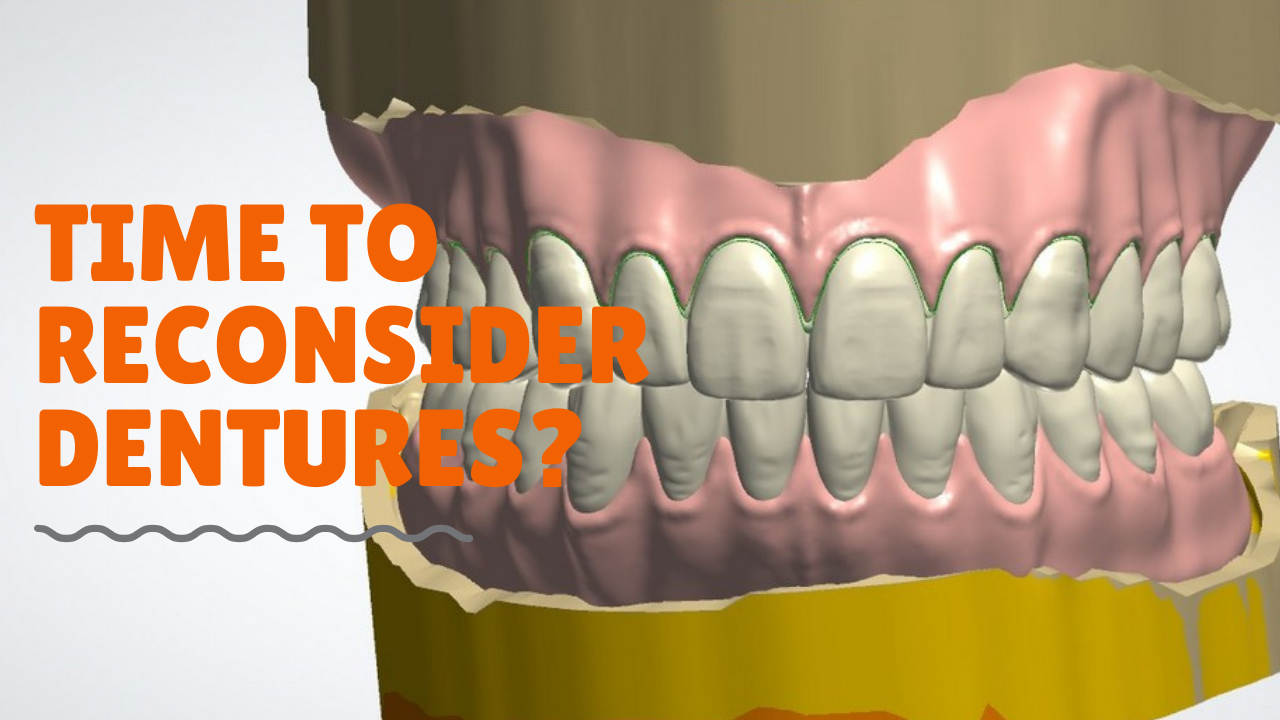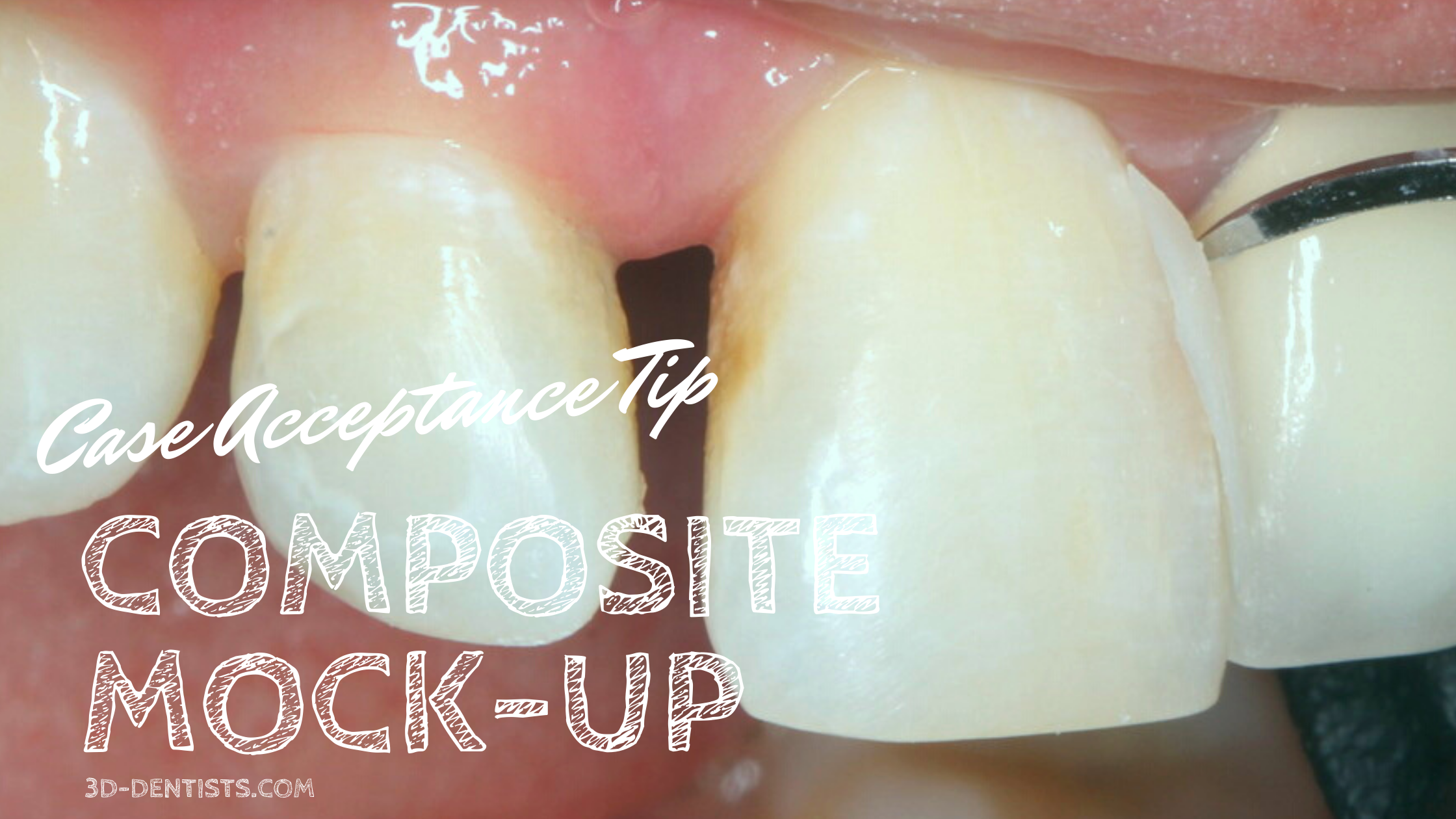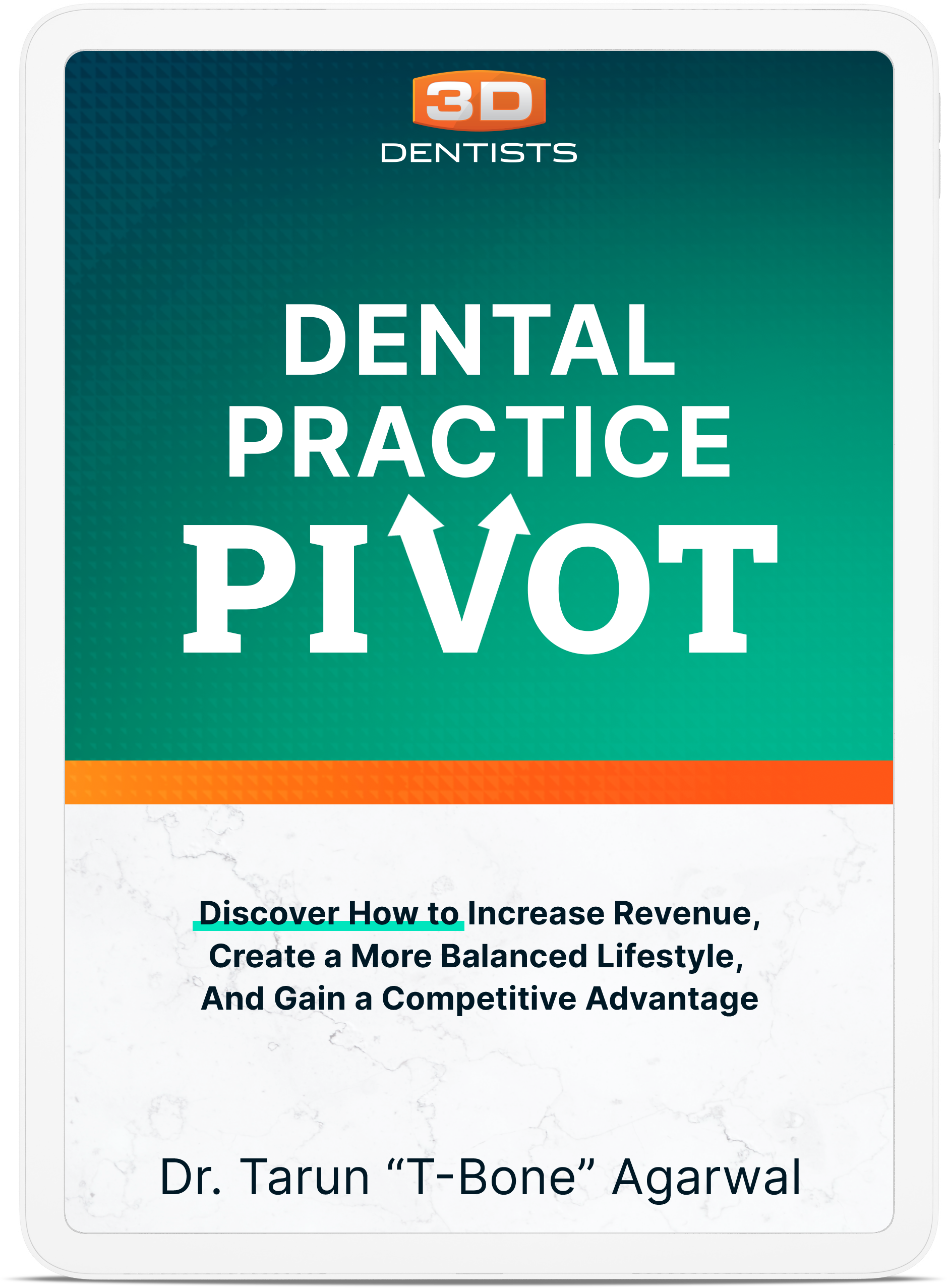The hardest thing in dentistry is the anterior porcelain restoration. There are literally so many things you have to get right.
- shade
- value
- characterization
- length
- surface texture
- contour
- and so much more
So how can we make some of these things easier? To me the answer is always technology.
Here’s a great example of how I use PowerPoint or Keynote to help evaluate and determine symmetry.
Meredith came to our office unhappy with tooth #9. As you can see it is quite dark from endodontic therapy due to trauma.
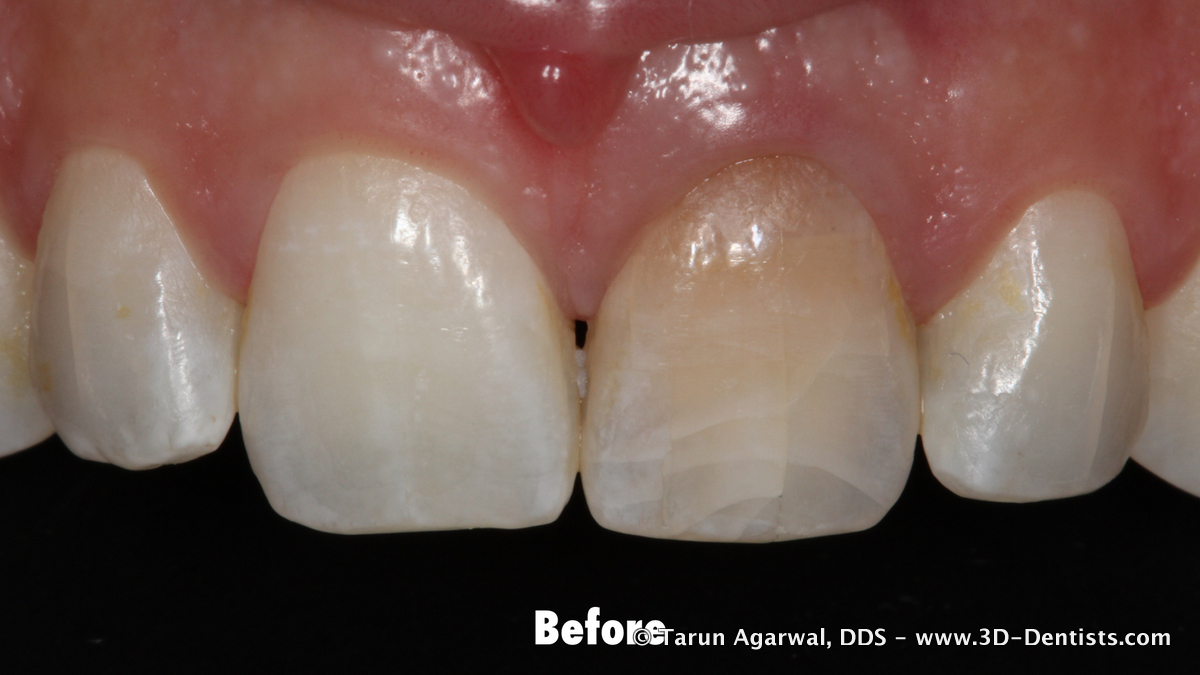
Experience has shown me that while the patient is mainly focused on the discoloration, when the discoloration is addressed they will often then turn to symmetry. This symmetry typically exists before we start but has been masked by the more prominent discoloration.
Here I use tracing of tooth #8 (in the solid line) and then simply duplicate and mirror the tracing and overlay it on #9 (the dotted line).
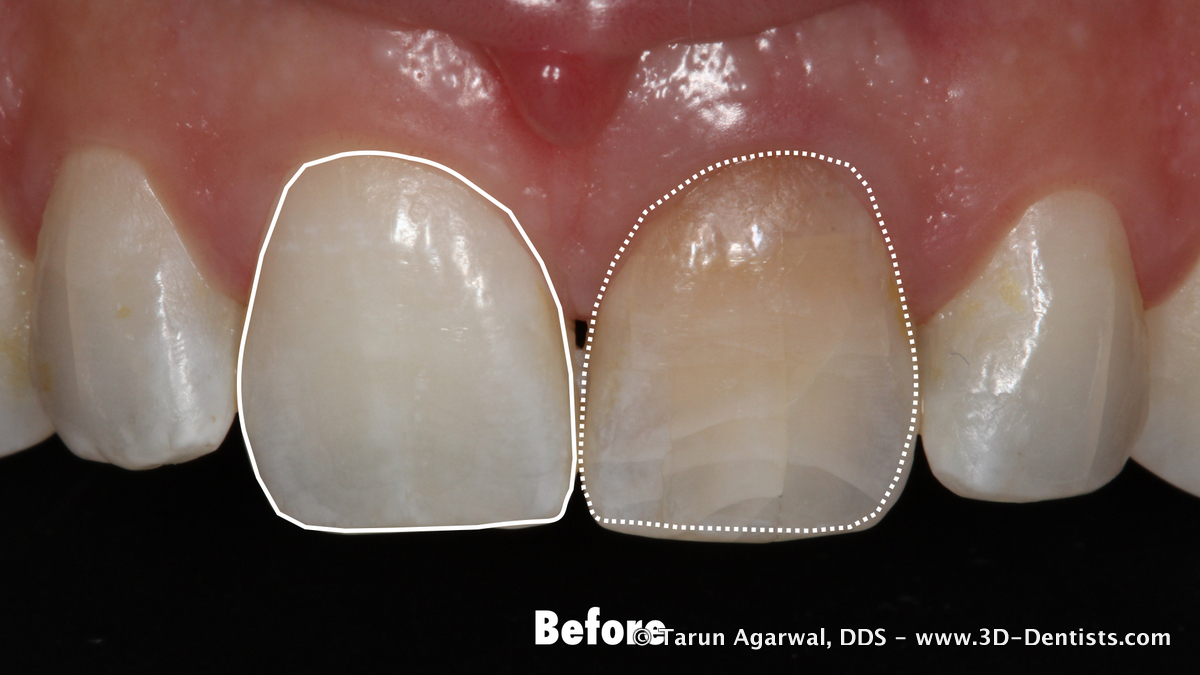
Now you can better see and communicate with the patient where the discrepencies exist.
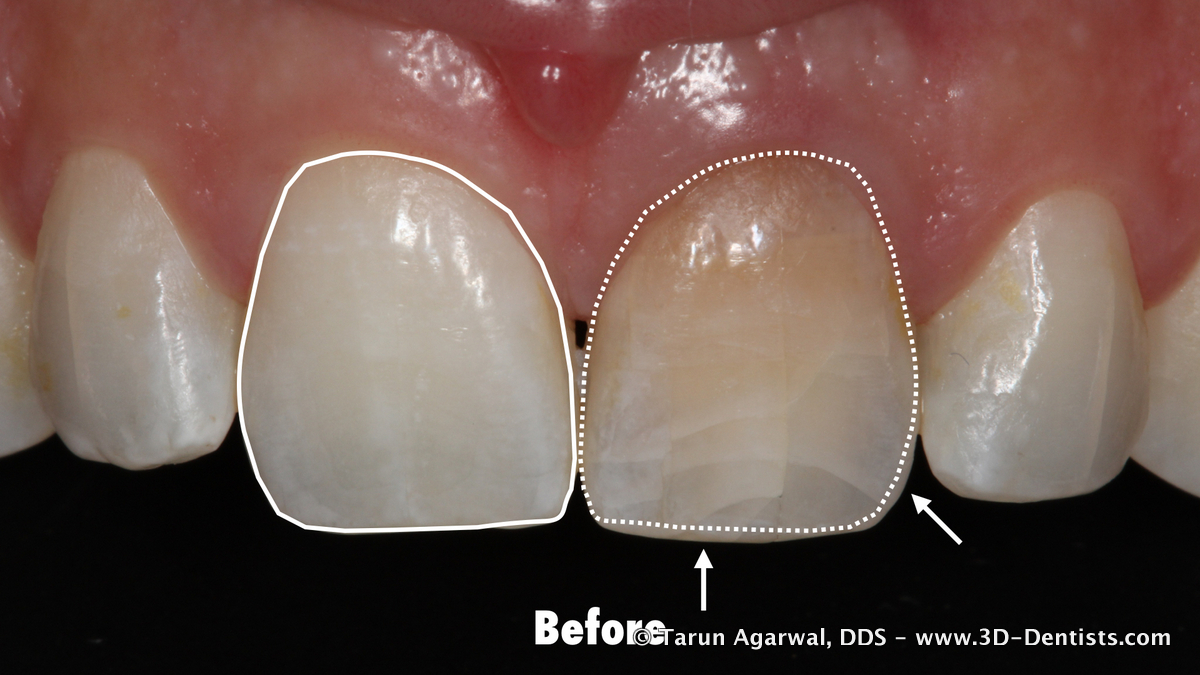
So why go to all this trouble? Two main reasons in my mind.
- Avoid unhappy patients. Anything that you deal with after the fact is an excuse.
- Build value. As a PPO dentist I have limitations in fees. Quite honestly, I can’t provide this level of expertise for PPO fees. I give patients a choice. You can have a PPO restoration or you can have a ‘cosmetic’ restoration. The cosmetic restoration costs more. The patient then chooses which they want. That’s another discussion. If you would like for me to go into more detail on this just leave a comment below.
This same concept is then applied to the provisional for evaluation.
Here is our provisional. In cases like this I utilize a CEREC ceramic provisional. This is EmpressCAD Multi B1 stained and glazed. This is not nearly good enough. But the amount of information it provides my ceramist is crucial to being able to achieve a great result.
- It shares the value and shade.
- It shares the facial anatomy.
- It helps evaluate characterizations.
- It conveys the contours.
- It conveys the opacity. How well does this mask and do we need to use something more translucent or more opaque for the final restoration.
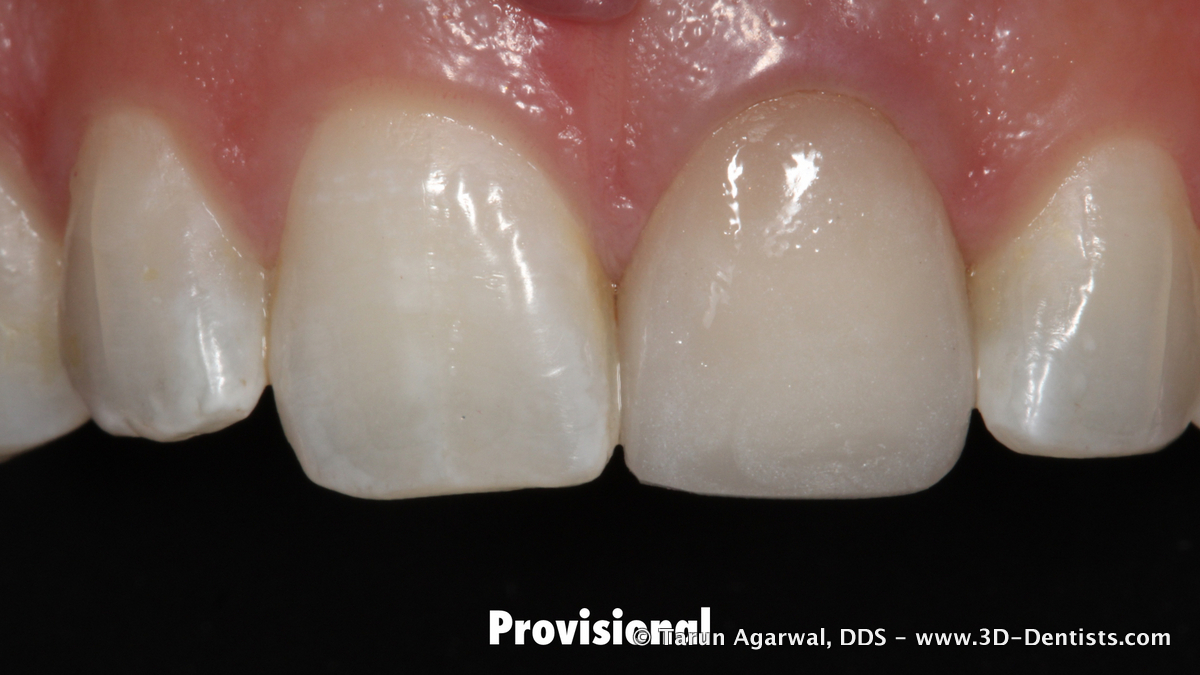
The natural #8 is then overlaid onto the provisional #9.

The patient kept saying the tooth was longer. When shown this picture it was clear it wasn’t longer, but the disto-incisal contour was incorrect. The arrows show areas where contouring is needed.
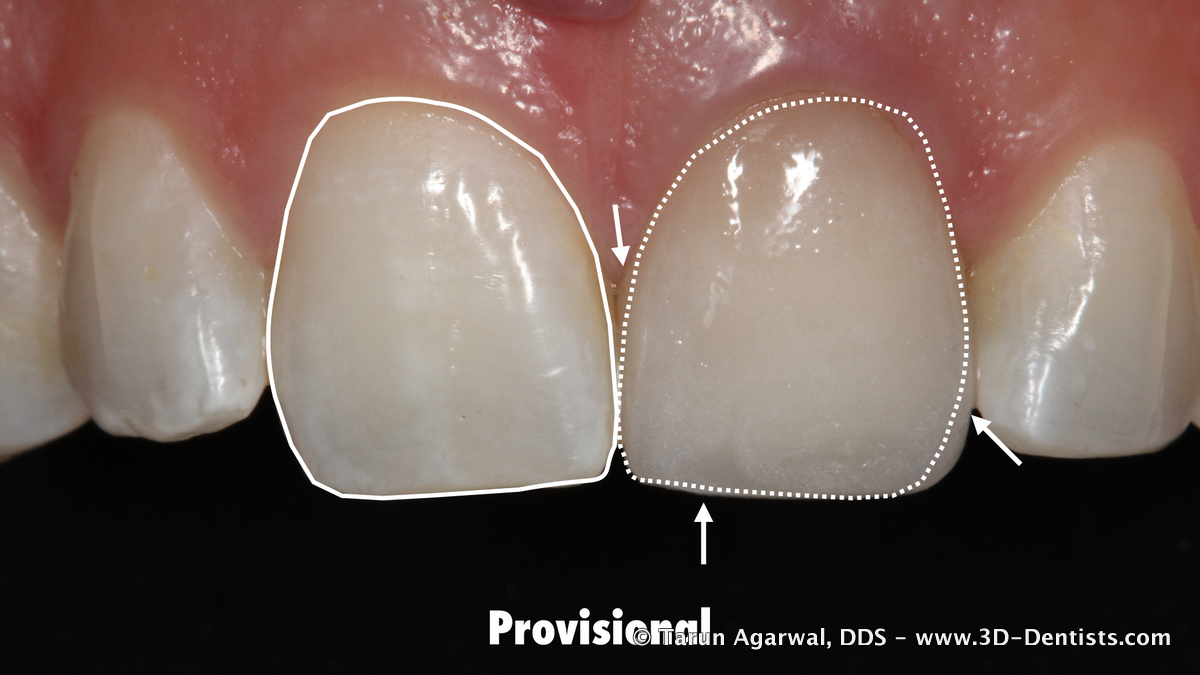
Do you ever look at a restoration and just know it isn’t quite right, but can’t figure out where to adjust. Just use the simple trick above and you’ll be surprised at how well it shows itself!
Do you hope to reduce your patients dependence on insurance? Using photography and communication can help your patients see the value. It has worked extremely well for me, our practice, and our patients.
Your thoughts would be greatly appreciated in the comments below.

